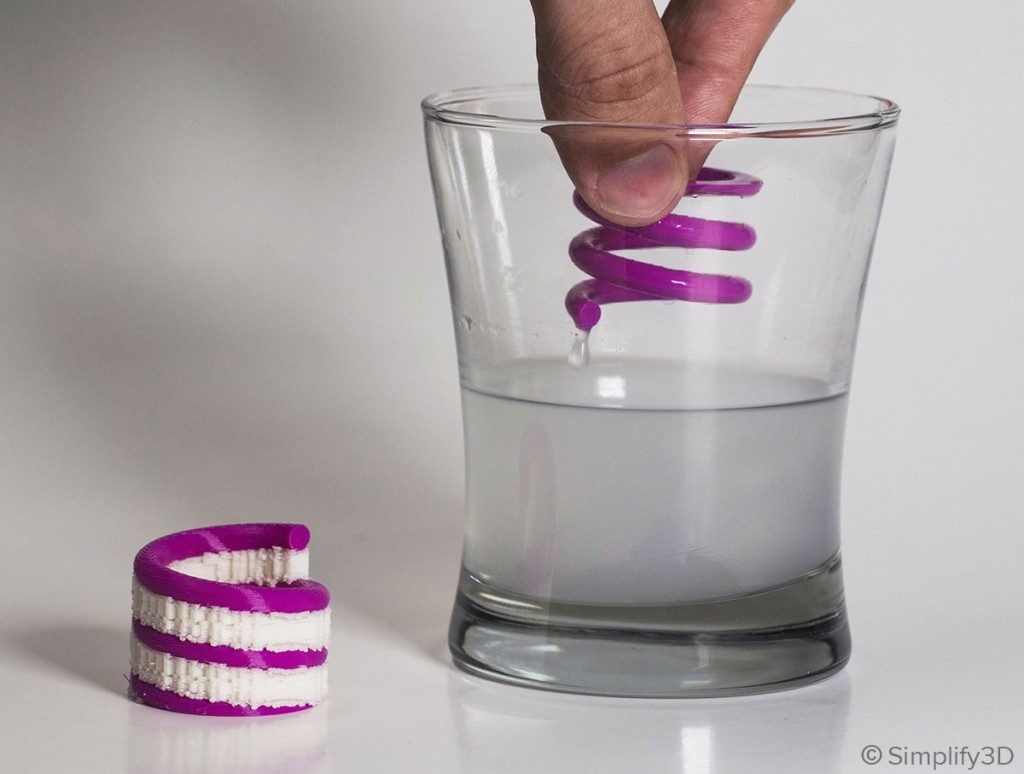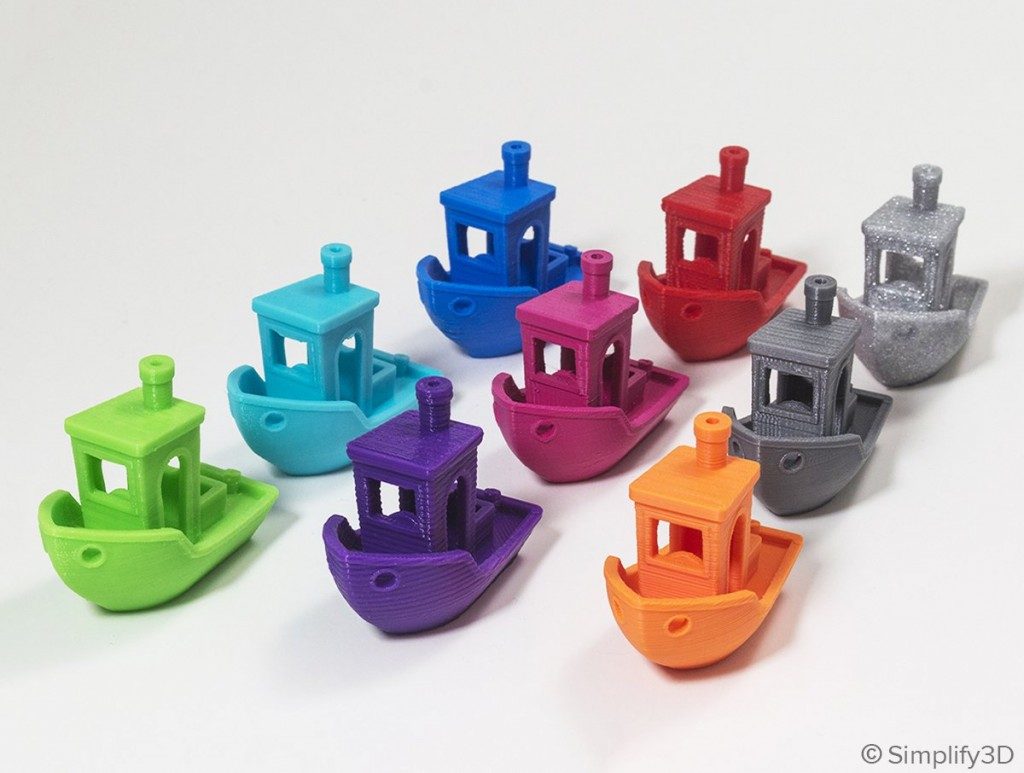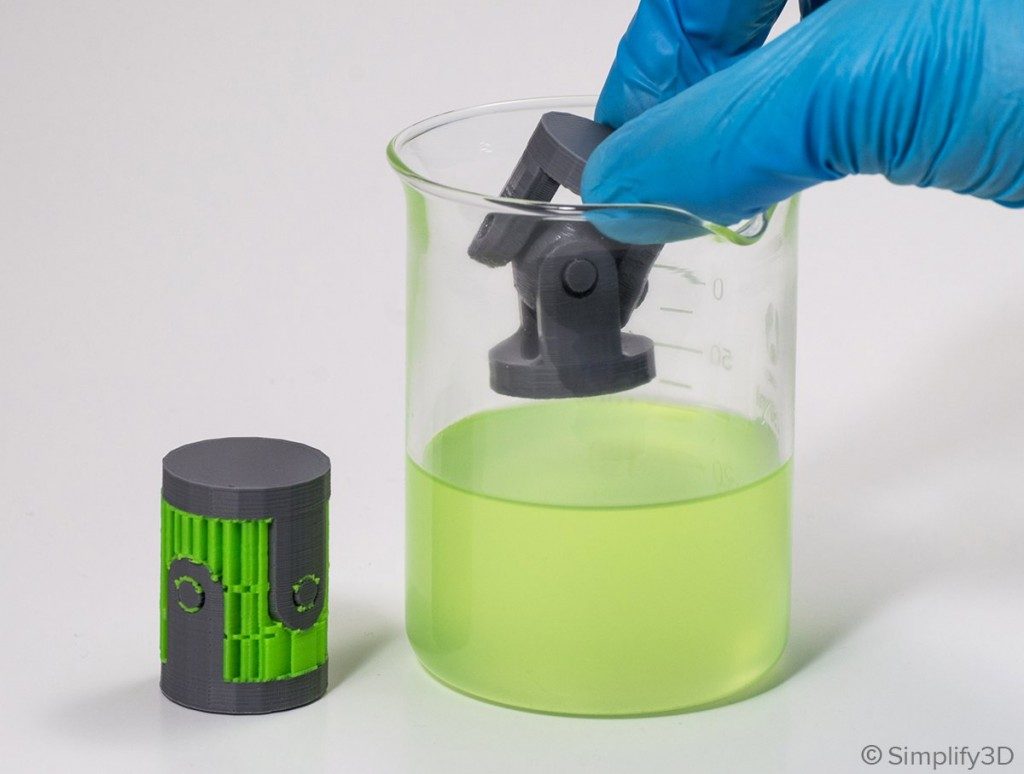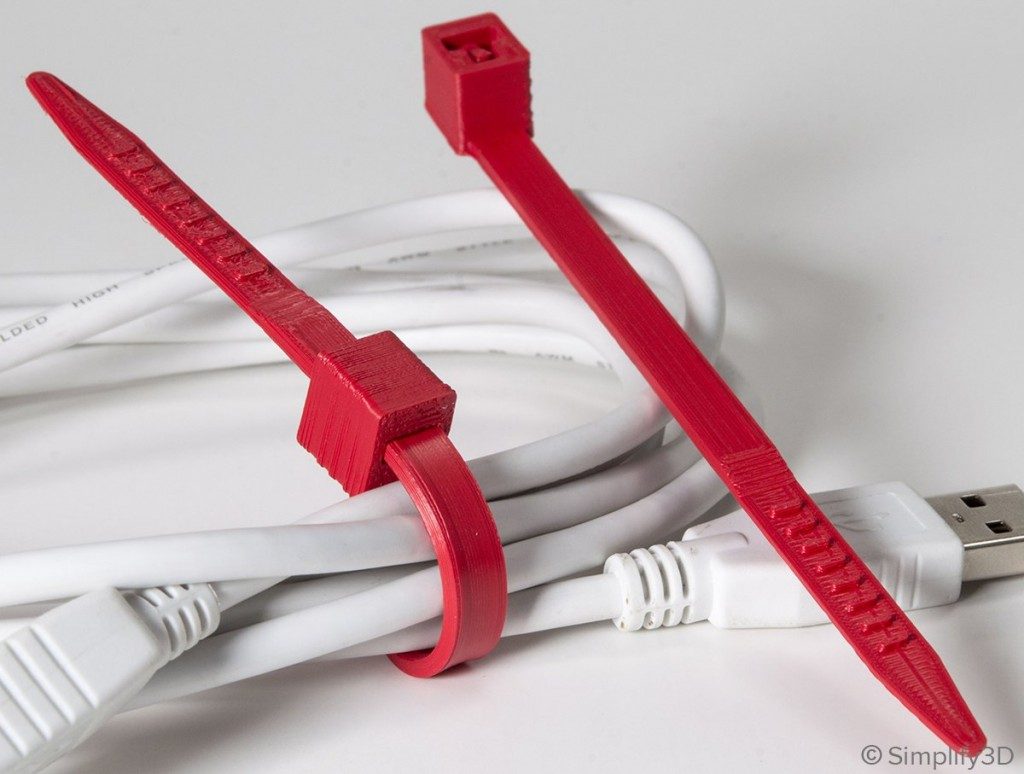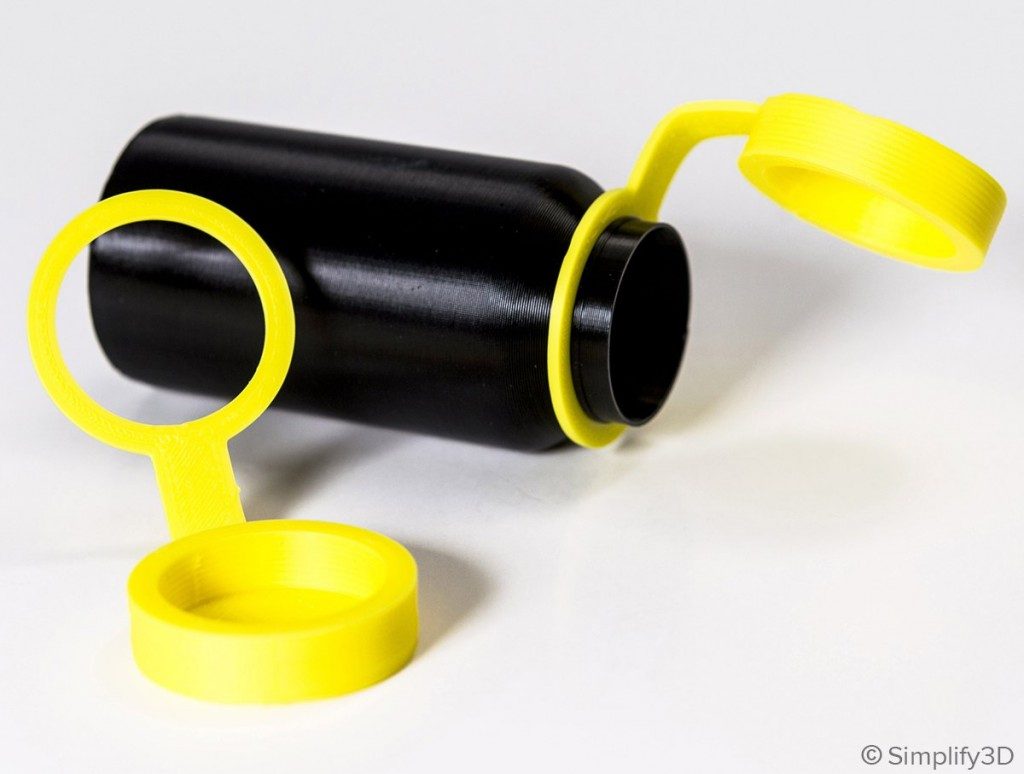PVA
PVA is commonly known for its ability to be dissolved in water and is often used as a support material for complex prints.
Overview
PVA, or Polyvinyl Alcohol, is a soft and biodegradable polymer that is highly sensitive to moisture. When exposed to water, PVA will actually dissolve, which makes it a very useful support structure material for 3D printing. When printing extremely complex shapes or ones with partially enclosed cavities, PVA supports can be used and easily removed by dissolving in warm water. Standard supports may have been difficult to print or remove in these situations. PVA can also be used as a model material if there is a need to make quick prototypes.
Pros
- Great water dissolvable support material
- No special solvents required
- No additional hardware required
Cons
- Moisture sensitive
- Airtight storage containers required
- Greater chances of clogging if the nozzle is left hot when not extruding
- Expensive
Hardware Requirements
Before 3D printing with PVA make sure your 3D printer meets the hardware requirements listed below to ensure the best print quality.
Best Practices
These tips will help you reduce the chances of common 3D printing issues associated with PVA such as absorbing moisture, warping, and fumes.
Take Precautions for Filament Storage
Since PVA is highly reactive to water, storing the filament in a moisture-free container is mandatory. PVA that has absorbed water from the air will tend to bubble and crack during printing, which will ruin the quality and strength of the finished part. When you are done with the PVA spools, be sure to remove them from your printer and place them in air-tight containers along with a desiccant to remove any moisture from the container. If your filament has already absorbed too much moisture, the filament can be dried using a commercial dehydrator, or an oven set to the lowest possible temperature for a few hours. This will draw the water out of the filament without melting it, allowing it to print smoothly and without bubbles.
Use an Ooze Shield
When using PVA as a support material for your PLA prints, consider adding an ooze shield with at least two outlines. This will have the benefit of priming the PVA extruder after every tool change, which will ensure this extruder is ready to print at the start of the layer. Additionally, the ooze shield will catch any oozing from both nozzles to prevent these plastic deposits from reaching your part. Once the print is completed, the ooze shield can be removed and discarded. If you find the ooze shield is too weak or tends to separate easily, consider adding an additional ooze shield outline to thicken the protective shield.
Use Dense Support Layers
PVA can be rather expensive, so you want to minimize the amount of material that is used for your support structures. Simplify3D includes a useful feature called Dense Supports, which allows you to use the PVA material only at the interface layers between your part and the supports. This can easily offer a PVA material savings of 90% or more, while still allowing the supports to easily be dissolved and separated from the part. The dense supports also create a nearly solid interface layer, which improves the surface quality on the underside of your print. If you have never used this feature before, there is a great video explaining the process, which can be found here: How to Use Dense Supports.
Pro-Tips
- In multi-extruder setups, cooling down the PVA hotend during idle times can prevent oozing and clogging
- Set the support upper separation distance to zero layers for a better surface finish. The PVA will be dissolved away, so it doesn’t matter if it bonds to the part while printing. This same technique can be used for your PVA rafts.
Get Started with PVA
Now that you understand the basics of printing with PVA, you are ready to try your first print! We’ve put together some sample project ideas and even a list of popular filament brands to help you get started.
Common Applications
- Removable supports or rafts
- Dissolvable/Disintegratable applications
- Decorative parts
Sample Projects
Popular Brands
- Ultimaker PVA
- Matterhackers PVA
- eSun PVA
- HobbyKing PVA
How does PVA stack up against other materials?
Click below to view our extensive Properties Table with a complete side-by-side comparison.

